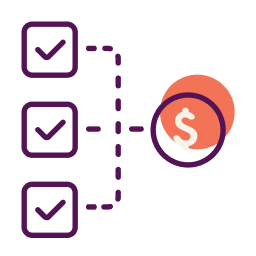The weekly staff meeting is a staple in offices around the world, but in many cases staff meetings are dull and boring sessions that workers begrudgingly drag themselves to because they have to, not because they want to or find them stimulating.
Follow these seven steps to breathe a little life into your stale stand up staff meeting. Whether they are in-person or remote, adding a few rules to keep the meeting moving will leave everyone happier at the end of the call.
1. Shorten the Meeting Time
When you open Outlook or Google Calendar to create a new meeting, the default meeting lengths are 30 minutes and one hour. This is a standard meeting length at companies around the world, but just because it is the standard does not mean it makes the most sense.
Some businesses prefer their meetings last 25 minutes and 50 minutes, as cutting those few minutes gives people time to get to the next meeting and odds are there are a few minutes of fluff to cut out anyway. As writer and speaker Nic Haralambous said in an article on meeting lengths, “don’t let your calendar decide the value of your time.”
2. Limit Irrelevant Updates & Chatter
Is there one person in your team who reads their entire calendar out loud for the next two weeks in the weekly stand-up meeting? I’d bet you that update is mostly a waste of time outside of an appointment or two that impacts the wider team. If someone ritually wastes everyone’s time, put a stop to it.
In fact, most updates and chatter in meetings tends to be irrelevant. If you really want your meetings to be efficient and effective, you may have to act like a general keeping your troops focused on the task at hand. Go through the meeting’s important points, assign follow-ups, and keep the personal updates for another time.
3. Designate a Teacher of the Week for a Lesson
Some meeting goers tend to sit at the back of the room quietly week after week, while others dominate the conversation. You can break both of those trends by adding a lesson of the week in your meetings.
On a rotating basis, every member of your team can bring a new tip or lesson to the group that lasts up to 5 minutes. It can be anything from Excel tips to email management or anything else that is relevant to everyone present. There is always something new and useful everyone can contribute, and giving them an opportunity to do so helps improve their speaking skills while engaging the whole group in a new, interesting topic.
4. Make a ‘No Rehash’ Rule
Security software company Brivo has an amazing “no rehash” rule at meetings. Every employee has a ping-pong paddle that says, “No Rehash,” and any time a topic comes up that has been discussed before, any employee can kill the conversation with the paddle.
In corporate meetings, it is easy to bring up old business topics to discuss again and again and again, even when a decision is already made or is pending an agreed upon milestone. Don’t waste time discussing what has already been decided or can’t be resolved.
5. Stand Up
Is your meeting called the weekly stand up? Try to do it actually standing up. One CEO recently tested standing up at meetings with his team and saw a 25% decrease in meeting times.
It’s no secret that sitting all day is bad for us. Really bad. It increases the risk of heart disease by 64% and increases the risk of some cancers. Even if your employees have yet to adopt standing desks, they can adopt standing meetings.
6. Always Use an Agenda
If every meeting is a free-for-all, it’s no wonder that meetings take a lot of time and get little done. Going in with an agenda helps keep the meeting on task and productive. Even if it is not currently part of your company culture, it is easy to add. Just tell people they have to email you ahead to get something on the agenda or it will be tabled until the next week.
An agenda keeps everyone focused and ensures you hit the important points in the allotted time. Agendas also help you decide what’s important enough to talk about so you avoid useless banter, rehashing, and other time wasters in the conference room.
7. Skip the Meeting All Together
Web based technologies paved the way for a new and incredible idea: go without having the meeting at all. Rather than pull everyone away from their work to sit (or stand) and talk for up to an hour, you may be able to quickly resolve questions and issues without the meeting.
One way to avoid a meeting is to just walk over to a co-worker’s desk to ask a question without scheduling time. You can also send an instant message, email, or ask if they have five minutes to quickly discuss an issue. If you can get done in five minutes what would have otherwise taken 30, you just saved yourselves 25 minutes each, or almost an hour of productive company time. Now that’s a synergy win-win if I’ve ever seen one.
A few digital products have emerged to help kill meeting fatigue as well. Most communications and coordination can happen in productivity and teamwork apps. I’m a big Asana and Slack user personally, but there are many platforms that may also cut down on your email as well.
This article was originally written on November 20, 2017 and updated on February 1, 2021.



Have at it! We'd love to hear from you and encourage a lively discussion among our users. Please help us keep our site clean and protect yourself. Refrain from posting overtly promotional content, and avoid disclosing personal information such as bank account or phone numbers.
Reviews Disclosure: The responses below are not provided or commissioned by the credit card, financing and service companies that appear on this site. Responses have not been reviewed, approved or otherwise endorsed by the credit card, financing and service companies and it is not their responsibility to ensure all posts and/or questions are answered.